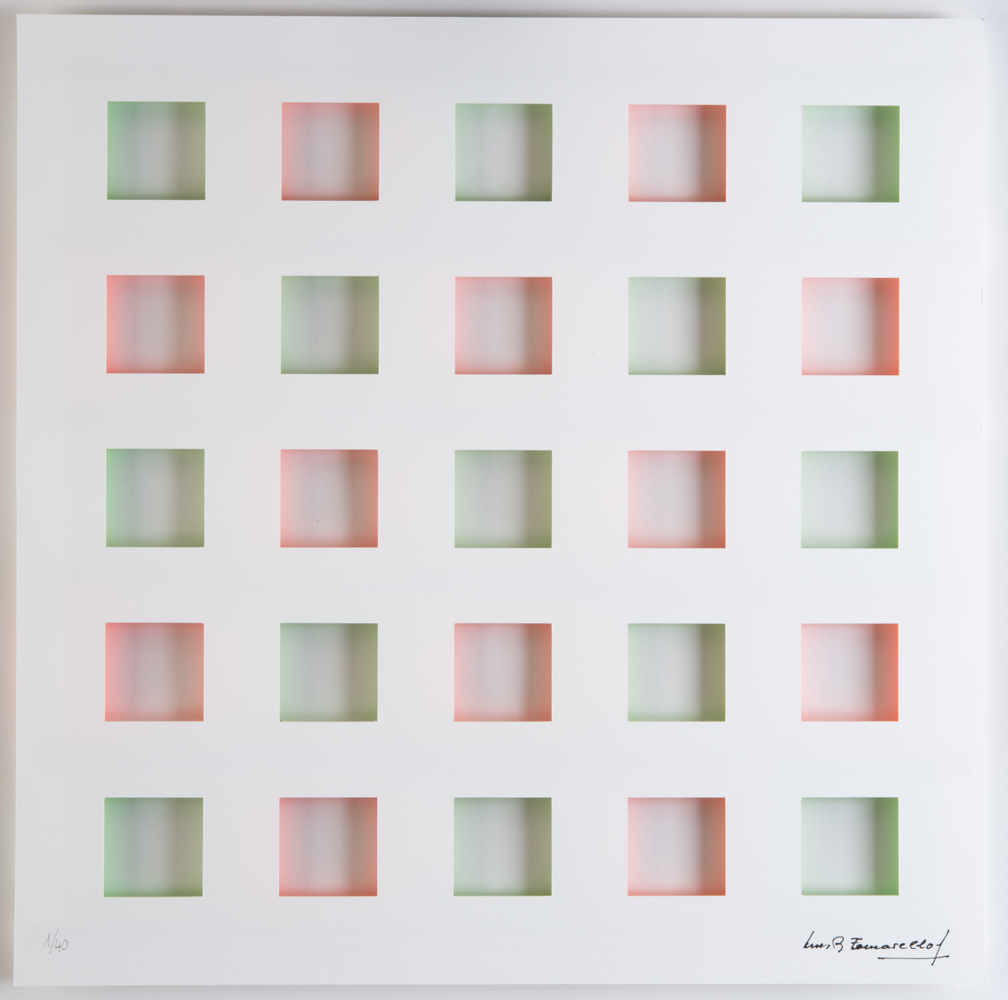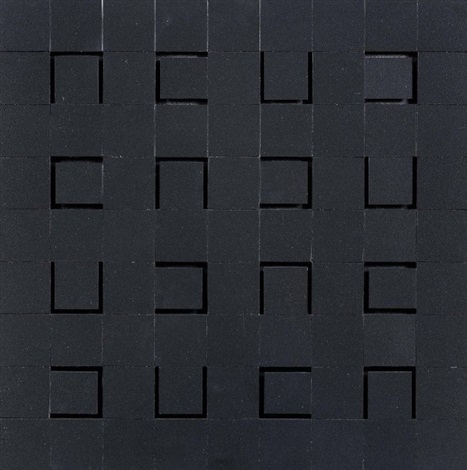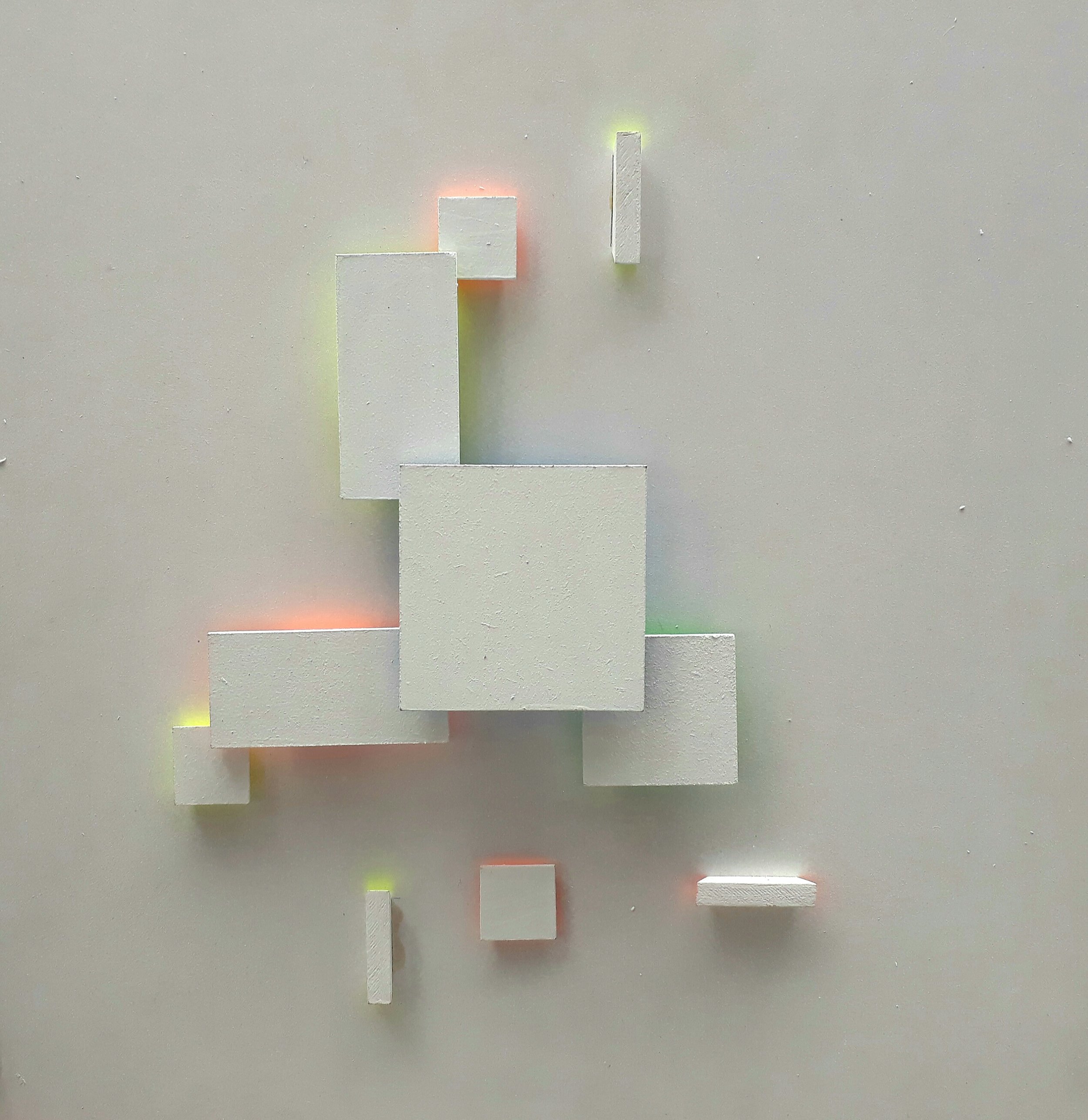LUIS TOMASELLO
Available works
Luis Tomasello (Argentina, 1915)
“The shape gives rise to the color, which is transformed from vision into sensation; it is projected into space, where it tints the atmosphere, and becomes iridescent on touching the plane.”
Born to an Italian family in La Plata, a province of Buenos Aires, Luis Tomasello’s first work experience was with his father, as a bricklayer, carpenter, and painter. He began taking drawing classes in the evenings as a teenager and attended the Escuela Nacional de Bellas Artes Prilidiano Pueyrredón in Buenos Aires from 1932 to 1938. Two years later, he enrolled at the Escuela Superior de Bellas Artes Ernesto de la Cárcova, where he studied until 1944. In the mid-1940s, young artists in Buenos Aires were challenging representational traditions in art; Tomasello met painters Emilio Pettoruti and Carmelo Arden Quin during this time, two important figures in the Argentine avant-garde.
In 1951, Tomasello traveled to Paris for the first time; he relocated permanently to Paris in 1957, joining a large and dynamic expatriate community of Latin American kinetic artists there. Many of these artists began making constructivist abstract work and then shifted to kinetic and optical art in the mid-1950s and early 1960s. Tomasello is internationally known for his Atmospheres chromoplastiques, in which he poses white cubes on a white background to engage with the colors of shadows and reflected light. As well as exhibiting extensively internationally, Tomasello has completed numerous large-scale public art commissions in Argentina, France, Mexico, and the United States. His Chromoplastic Mural (2011) is on view at the Nelson-Atkins Museum of Art in Kansas City.
Luis Tomasello, who moved to Paris in the 1950s, is best known for his white-on-white abstract geometric constructions that rely on light to create form and image. Tomasello was keenly interested in cinetism, particularly the use of existing light to create the illusion of movement through shifting light and shadow. His works, that he called “Atmosphères chromoplastiques,” were included in many national and international exhibitions, including the “La Lumière et le Mouvement” (“Light and Movement”) (1967), which was considered a groundbreaking show for Op Art.



